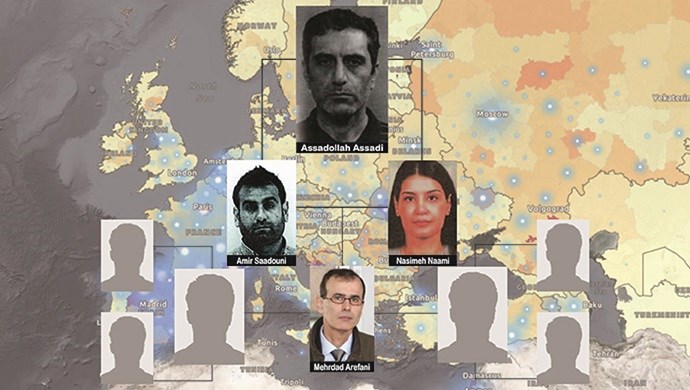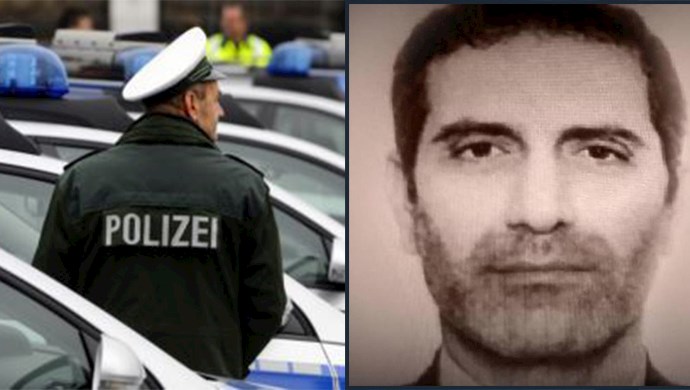Analysis by PMOI/MEK
Iran, January 29, 2021—Next week, a court in Antwerp, Belgium, will decide on the case of Assadollah Assadi, a career Iranian diplomat who plotted a bombing attack against a major gathering of Iranian dissidents in France in 2018. The attack was foiled by European authorities, and Assadi was arrested along with his co-conspirators.
This case and the details that have cropped up during the trial and investigation speak volumes about the Iranian regime’s terror-based foreign policy and the threat it poses to global peace and security. It also highlights the failure of a policy centered on containing Tehran’s malign behavior through continuous concessions and letting it get away with crimes and violations of international norms and values.
The highest regime officials were involved
Assadi was the Third Counsel at the Iranian regime’s embassy in Vienna. He was missioned with bombing the Free Iran Rally, the annual gathering of the supporters of the National Council of Resistance of Iran (NCRI), held in Villepinte, near Paris.
Assadi had been planning the attack since a year earlier. Two of his accomplices, the Iranian-Belgian couple Nassimeh Naami and Amir Saadouni, had posed as supporters of the People’s Mojahedin Organization of Iran (PMOI/MEK) for years and had been tasked with planting and detonating the bomb at the rally’s venue. They were arrested in Belgium while they were in possession of the bomb. Assadi personally delivered the bomb to the couple in Luxembourg.
A fourth operative, Mehrdad Arefani, had been working closely with Assadi for years and served as his eyes and ears at the rally. Arefani was arrested at the Villepinte hall before attending the event.
The Iranian regime has in various ways tried to shrug off responsibility for the bombing plot, calling it a rogue operation and a false flag operation. But according to information obtained by European authorities and the Iranian Resistance, the attack was planned and ordered at the highest levels of power in Tehran.
“We know that the Supreme Leader Ali Khamenei, the regime President Hassan Rouhani and the always-smiling Foreign Minister Mohammad Javad Zarif, all three knew about the attack, all three agreed to the attack, and all three ordered it. If you reflect on this, you can imagine the scope of this attack,” Alejo Vidal-Quadras, former Vice-President of the European Parliament, said during an online conference on Thursday which discussed the Assadi case and the Iranian regime’s terrorism.
Assadi had used his diplomatic cover to transfer the bomb from Tehran to Vienna on a commercial flight. He also used his diplomatic cover to roam freely across Europe and make hundreds of trips to coordinate with his agents and subordinates.
Former Member of European Parliament Struan Stevenson, who also spoke at the event, emphasized: “As a diplomat you can’t make hundreds of visits to different countries without permission from your ambassador. And the ambassador takes his command from Tehran. There’s no doubt that this plot was ordered by Khamenei, Rouhani, Zarif, and Intelligence Minister Mahmoud Alavi.”
Assadi has claimed that he has diplomatic immunity and cannot be tried for the terrorism charges, a claim that has also been issued by regime officials in Tehran. But this only further highlights the reality that the regime in its entirety has been involved in the attack.
At an online conference held in October, Cristophe Marchand, lawyer of international criminal law, stressed: “[Assadi] claims to have diplomatic immunity. But if he does so, then he also accepts responsibility by the regime for this horrible act.”
Not only an Iranian affair

The Iranian “diplomat” Assadollah Assadi is considered to be the leader of a huge network of regime’s spies and agents in Europe.
The main target of the bombing plot was Mrs. Maryam Rajavi, the president-elect of the NCRI. According to confessions made by Naami and Saadouni, Assadi had explicitly instructed them to plant the bomb as close as possible to the location where Mrs. Rajavi would be sitting.
The Iranian regime has a long history of targeting and assassinating Iranian dissidents abroad. But in this case, had the attack succeeded, the victims would have included dozens of politicians and prominent figures from different countries who had attended the event.
“I was sitting very close to Madam Rajavi. First-rank political figures were sitting in a space of a few meters around her. You can imagine the consequences if such an attack succeeded. The attack could have caused hundreds of deaths. The consequences would have been catastrophic,” Vidal-Quadras said in Thursday’s conference.
Also worth noting is that the regime has tried to use the case as an excuse to further engage in terrorism and blackmailing. According to a Reuters report in October, Assadi had told Belgian authorities that his case was “being closely watched by undisclosed groups in Iran and neighbouring countries” and warned them about the consequences of “an unfavourable verdict.”
Assadi had thus openly threatened terrorist retaliation against European countries.
In tandem, the regime has engaged in its old tactic of arresting foreign nationals in Iran and using them as bargaining chips in negotiations with the West. A few days before Assadi’s trial in November 2020, the Iranian regime announced that it would be executing jailed Iranian-Swedish doctor Ahmad-Reza Djalali in a bid to pressurize European authorities.
This further proves that the target and potential victims of Tehran’s terrorism are not just Iranian political refugees but also citizens of all European countries.
The tip of the iceberg
There’s more to Assadi’s case than the four individuals being tried in Belgium. According to documents obtained by German police, Assadi had made hundreds of trips to 11 European countries and held accounts of cash payments he had made to dozens of operatives.
“The trial of Assadollah Assadi is the tip of a massive terrorist iceberg,” Stevenson said in Thursday’s conference.
This shows that Tehran is running a much larger terror network in Europe, and while European authorities have managed to stop one big bombing plot, the regime could be hatching many more. There could be many more agents like Assadi, running terror networks and engaging in criminal activities on the Iranian regime’s behalf on European soil.
In fact, in March 2018 another Iranian regime bombing plot was foiled, this time targeting a Persian New Year celebration of MEK members in Albania. That event too was attended by many politicians and personalities from different countries and could have led to mass casualties had it not been stopped.
Like Assadi’s case, this second terror plot also traced back to the regime’s embassy, this time in Tirana. The Albanian government eventually expelled the Iranian ambassador and another diplomat for their role in undermining the country’s security. These and other similar cases in the past decades further highlight the truth that the regime uses its embassies as centers to coordinate and carry out terrorist attacks.
The key takeaway from the Assadi case, regardless of its outcome, is that terrorism is part and parcel of the regime’s foreign policy. And as we’ve seen in the past decades, a policy that has fallen short of clamping down on the regime’s terror activities has enabled Tehran to expand its terrorist tentacles all across Europe.
While the Belgian court will soon be passing verdict on Assadi and his accomplices soon, it is important to view the case in the broader picture of policy toward Iran. This is neither an isolated case nor the end of a story. It is a wakeup call for European leaders to view Iran’s diplomacy for what it is: A terror machine that is threatening the security of all European citizens.
And this terror machine can only be stopped when Europe acts in a concerted manner to shut down the regime’s embassies, cultural centers, and front organizations that involved in terror activities. All diplomats and agents of the regime who are found to be involved in spying and terror plots are a threat to global security must be expelled from European countries. Regime agents who are posing as political refugees must be stripped of their legal status and expelled.
Only a firm policy will bring the Iranian regime’s terrorism apparatus to heel. Anything less will only leave cracks for Tehran to exploit and further pursue its policy of terror and death.





